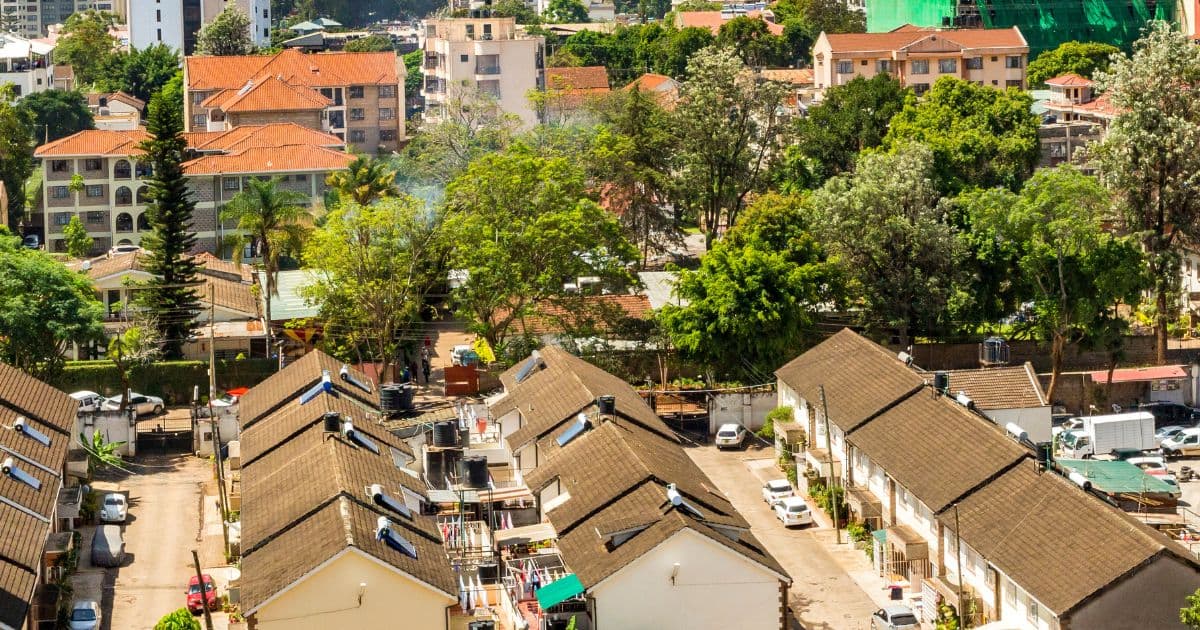We're loading the full news article for you. This includes the article content, images, author information, and related articles.
Price growth in Nairobi's crucial satellite towns slowed significantly in the third quarter of 2025, as tough economic conditions and squeezed household incomes dampen the once-booming self-build market, a new report indicates.

Land price appreciation in Nairobi’s satellite towns decelerated sharply in the third quarter of 2025, reflecting mounting economic pressures on middle-class households and a subsequent slowdown in self-building activities. According to the HassConsult Land and Property Price Index for July to September 2025, released on Tuesday, October 28, 2025, land prices across 14 satellite towns rose by a marginal 0.84 percent. This brings the annual growth rate to 6.6 percent, a notable cooling from the rapid escalations seen in previous years.
This slowdown points to a significant market shift, as persistent inflation, high borrowing costs, and general economic uncertainty reduce the purchasing power of Kenyans who have traditionally fuelled demand in these areas. “Many of these satellite areas, such as Kiserian, Kitengela, and Athi River, have been prime locations for middle-class buyers to develop their own family homes in stages and as incomes allowed,” noted Sakina Hassanali, Co-CEO at HassConsult, in the report’s release. “But tightening finances are reducing the flow of buyers able to get through the initial entry gate for self-building of a land purchase.”
The report highlights a growing disparity between developer-driven markets and those reliant on individual homebuilders. While the average price for an acre in the satellite towns stood at KSh 32.3 million, this figure masks varied performance across different locations. For instance, towns like Juja and Mlolongo, which attract active developers, recorded strong annual price growth of 14.9 percent and a quarterly rise of 3.45 percent, respectively. In stark contrast, towns more dependent on the self-build model saw prices stagnate or even decline; Kiambu, for example, recorded a 1.94 percent price drop in the third quarter.
Specific average prices per acre in key satellite towns during the quarter were recorded as:
This data contrasts sharply with Nairobi’s inner suburbs, where an acre averages KSh 223.9 million. Land prices in the 18 tracked suburbs rose 1.22 percent in the quarter, buoyed by developer demand for multi-use properties in areas like Spring Valley.
The slowdown is not occurring in a vacuum. It is a direct reflection of Kenya's broader economic climate. Although year-on-year inflation for September 2025 was within the Central Bank of Kenya's (CBK) target range at 4.6 percent, persistent high costs for fuel and food continue to squeeze disposable incomes. Furthermore, while the CBK has pursued an easing monetary policy, cutting the Central Bank Rate to 9.25 percent in October 2025 to encourage lending, the benefits have yet to fully trickle down to potential landowners facing high interest rates on financing.
For many Kenyans, the dream of owning a home, often realized by acquiring land in a satellite town and building incrementally, is becoming more challenging. The rising cost of construction materials, which saw a 1.27 percent quarter-on-quarter increase according to the Kenya National Bureau of Statistics (KNBS), further complicates affordability. This trend has significant implications for the construction sector, financial institutions, and the overall government's affordable housing agenda, which relies on a vibrant private real estate market.
Analysts suggest this cooling period may represent a market correction rather than a collapse. The long-term investment case for land in satellite towns remains strong, having outperformed most other asset classes since 2007. However, the immediate future will likely be defined by caution. “Only areas with strong developer demand are now reporting strong land price growth,” Hassanali observed, indicating a shift from a speculative, individual-driven market to one dominated by large-scale commercial and residential projects.
This shift presents both a challenge and an opportunity. For individual aspiring homeowners, the moderated price growth could offer a window to enter the market if financial conditions improve. For developers and policymakers, it underscores the need to address underlying economic issues—such as the cost of credit and construction materials—to sustain the real estate sector's growth. As the market adapts, the focus may pivot from speculative land buying to the development of integrated, affordable housing projects that meet the structural demand of Kenya's rapid urbanization.
Keep the conversation in one place—threads here stay linked to the story and in the forums.
Other hot threads
E-sports and Gaming Community in Kenya
Active 6 months ago
Popular Recreational Activities Across Counties
Active 6 months ago
The Role of Technology in Modern Agriculture (AgriTech)
Active 6 months ago
Investing in Youth Sports Development Programs
Active 6 months ago